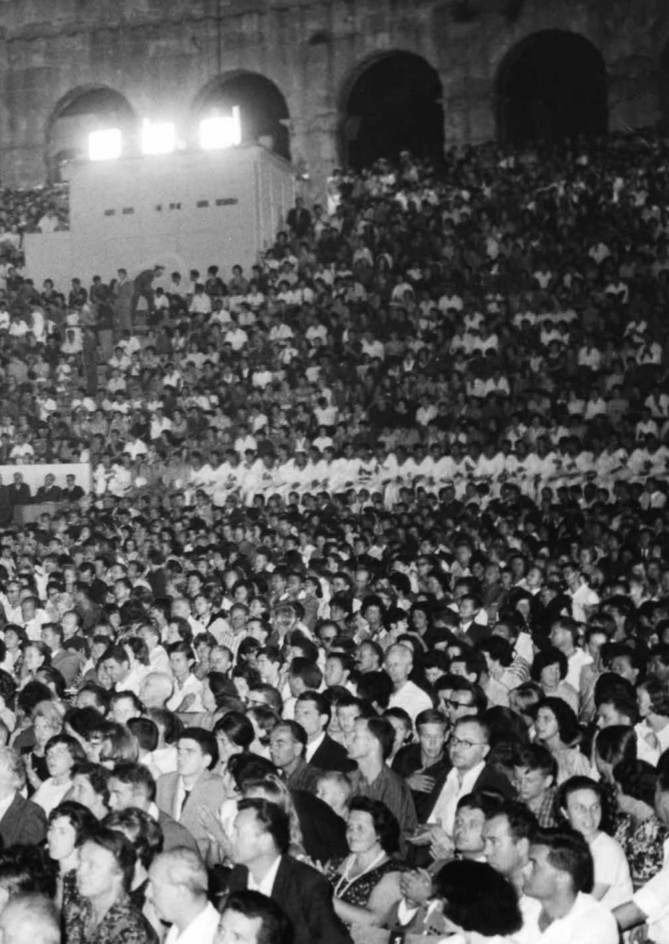Albert Glinsky: Theremin: Ether Music and Espionage (2000)
Filed under book | Tags: · biography, electronic music, music, music history, politics

“Leon Theremin led a life of flamboyant musical invention laced with daring electronic stealth. A creative genius and prolific inventor, Theremin launched the field of electronic music virtually singlehandedly in 1920 with the musical instrument that bears his name. The theremin-–the only instrument that is played without being touched-–created a sensation worldwide and paved the way for the modern synthesizer. Its otherworldly sound became familiar in sci-fi films and even in rock music. This magical instrument that charmed millions, however, is only the beginning of the story.
As a Soviet scientist, Theremin surrendered his life and work to the service of State espionage. On assignment in Depression-era America, he became the toast of New York society and worked the engines of capitalist commerce while passing data on U.S. industrial technology to the Soviet apparat. Following his sudden disappearance from New York in 1938, Theremin was exiled to a Siberian labor camp and subsequently vanished into the top-secret Soviet intelligence machine, presumed dead for nearly thirty years. Using the same technology that lay behind the theremin, he designed bugging devices that eavesdropped on U.S. diplomatic offices and stood at the center of a pivotal cold war confrontation. Throughout his life, Theremin developed many other electronic wonders, including one of the earliest televisions and multimedia devices that anticipated performance art and virtual reality by decades.
In this first full biography of Leon Theremin, Albert Glinsky depicts the inventor’s nearly one hundred-year life span as a microcosm of the twentieth century. Theremin is seen at the epicenter of most of the major events of the century: the Russian Revolution, two world wars, America’s Great Depression, Stalin’s purges, the cold war, and perestroika. His life emerges as no less than a metaphor for the divergence of communism and capitalism.”
Foreword by Robert Moog
Publisher University of Illinois Press, 2000
ISBN 0252025822, 9780252025822
xvi+403+[30] pages
Reviews: Irina L.Vanechkina (Leonardo, 2001), Hans-Joachim Braun (Tech Cult, 2001), Mark Polishook (Notes, 2001), Ann Warde (Comp Music J, 2002), Kyle Gann (Am Music, 2003).
PDF (138 MB, no OCR)
Comment (0)The Grand Illusion: Tito and 24 Million Metres of Celluloid (2014) [Serbian/English]
Filed under book | Tags: · cinema, film, politics, yugoslavia

“The Grand Illusion is dedicated to the great passion of Yugoslav president Josip Broz Tito (1892-1980) for all forms of moving pictures – movies, newsreels and other film and documentary forms. The project is based on the carefully maintained records of films which Tito watched from 15 March 1949 to 16 January 1980.
The Grand Illusion is about Tito as a watcher of films, but also about him as an actor, shadow director and most powerful producer. About a man who watched an average of 280 films a year, in all his residences, on land, sea and rail. About his encounters with the greatest film personalities of the second half of the twentieth century – Simone Signoret, Yves Montand, Sophia Loren, Elizabeth Taylor, Vivien Leigh, Orson Welles, Richard Burton and Laurence Olivier. About a statesman who was relaxed and entertained by film, and who could say about films “they simply blow your mind”, but who knew how to promote and sell them to serve him for educational purposes, as well as to prepare for travelling or when someone was coming to visit him.”
Publisher Museum of Yugoslav History, Belgrade, 2014
ISBN 9788684811259, 8684811259
67 pages
Armand Mattelart, Seth Siegelaub (eds.): Communication and Class Struggle, 1: Capitalism, Imperialism (1979)
Filed under book | Tags: · aesthetics, capitalism, communication, communism, information, marxism, media, politics, socialism, theory

“Communication and Class Struggle, a two-volume work, is the first general marxist anthology of writings on communication, information and culture. Its purpose is to analyse the relationship between the practice and theory of communication and their development with the context of class struggle. Armand Mattelart and Seth Siegelaub, the editors, have selected more 128 essential marxist and progressive texts originating in over 50 countries and written since the mid-nineteenth century to explain three interrelated phenomena: (1) how basic social, economic and cultural processes condition communication; (2) how bourgeois communication practice and theory have developed as part of the capitalistic mode of production; and (3) how in the struggle against exploitation and oppression, the popular and working classes have developed their own communication practice and theory, liberated mode of communication, culture and daily life.
This first volume deals with the basic Marxist theory underlying the analysis of the communication process, as well as studies centered on the formation of the capitalist communication apparatus, ideology and ‘mass’ culture. It contains 64 texts. More than one-third are published for the first time in English, and some texts appear for the first time in any language. In addition, it includes an extensive bibliography with over 500 books on the subject.”
Publisher International General, New York, and International Mass Media Research Center (IMMRC), Bagnolet, 1979
ISBN 0884770117, 9780884770114
445 pages
PDF (37 MB, updated to OCR’d version on 2017-10-30 via Memory of the World)
See also Volume 2.

